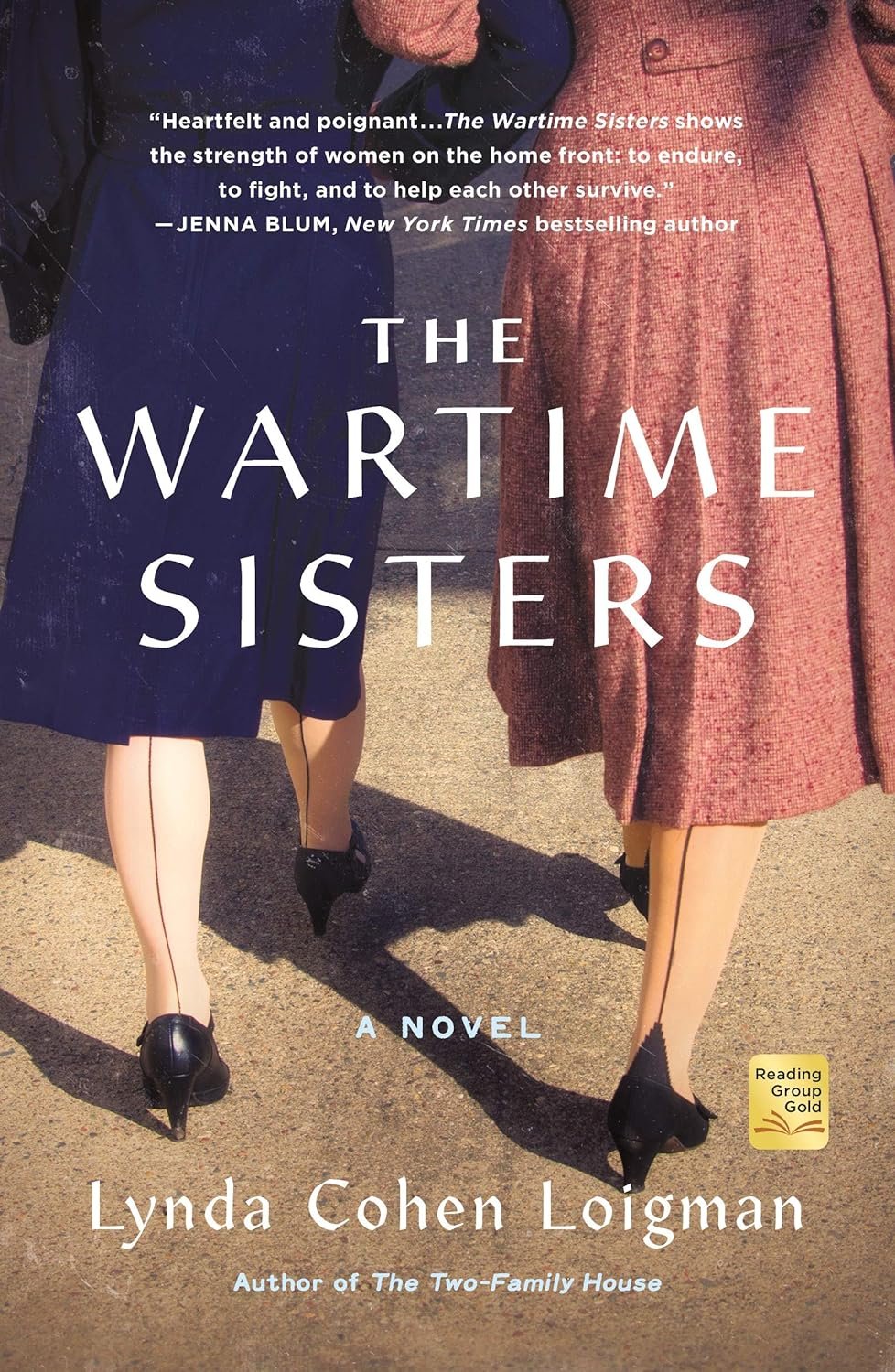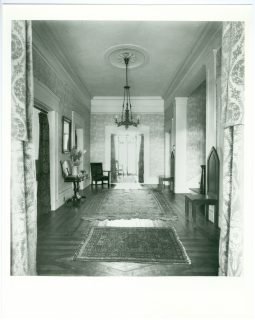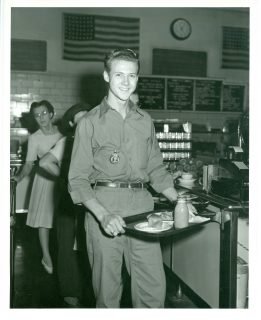The Wartime Sisters
“One of my favorite books of the year.” ―Fiona Davis, national bestselling author of The Dollhouse and The Masterpiece
Two estranged sisters, raised in Brooklyn and each burdened with her own shocking secret, are reunited at the Springfield Armory in the early days of WWII. While one sister lives in relative ease on the bucolic Armory campus as an officer’s wife, the other arrives as a war widow and takes a position in the Armory factories as a “soldier of production.” Resentment festers between the two, and secrets are shattered when a mysterious figure from the past reemerges in their lives.
“A stirring tale of loyalty, betrayal, and the consequences of long-buried secrets.” ―Kristina McMorris, New York Times bestselling author of The Edge of Lost and Sold on a Monday
Praise for The Wartime Sisters
“The Wartime Sisters is a heartfelt and poignant portrait of the complex bond between sisters, how our childhood roles define us as adults, and what dire consequences that can have, especially in times of war. The Wartime Sisters shows the strength of women on the home front: to endure, to fight, and to help each other survive.”
Jenna Blum
New York Times & International Bestselling author of The Lost Family and Those Who Save Us
“Fresh off her stunning debut The Two Family House, Lynda Cohen Loigman returns with The Wartime Sisters, an evocative home front tale set against the backdrop of the Springfield Armory during World War II. Through stoic, stubborn Ruth and her beautiful younger sister Millie, Loigman skillfully chronicles the complex sibling bonds and rivalries, the secrets we keep and truths that set us free. Loigman’s strong voice and artful prose earn her a place in the company of Alice Hoffman and Anita Diamant, whose readers should flock to this wondrous new book.”
Pam Jenoff
New York Times bestselling author of The Orphan’s Tale
“A riveting tale of sibling rivalry and the magnetic dissonance of family, filled with heart-stopping truths that are both tender and wise. One of my favorite books of the year.”
Fiona Davis
National bestselling author of The Masterpiece
“In her latest novel, Loigman once again deftly explores the complexities, heartbreaks, and fierce endurance of family bonds. Even amid the great tension and fears of the Second World War, The Wartime Sisters reminds the reader that the harshest battles are often fought here at home, with those we love and are meant to trust most. A stirring tale of loyalty, betrayal, and the consequences of long-buried secrets.”
Kristina McMorris
New York Times bestselling author of The Edge of Lost and Sold on a Monday
“The Wartime Sisters by Lynda Cohen Loigman is a powerful and moving story of secrets, friendship, and sisterhood. In Ruth and Millie, whom we follow from their childhood in Brooklyn to their entwined lives as young mothers at a wartime armory in Springfield, Loigman masterfully portrays the complicated sister relationship. Beautifully written, emotionally charged, and rich with historical detail, this novel, and these sisters, will stay with me long after I turned the last page.”
Jillian Cantor
Author of Margot and The Lost Letter
“With measured, lucid prose, Loigman tells a moving story of women coming together in the face of difficulties, both personal and global, and doing anything to succeed.”
Publishers Weekly
“Loigman’s second novel portrays a sampling of the women whose roles were pivotal during the wartime manufacturing boom…[and] highlights historic advances for women.”
Kirkus Reviews
"The Wartime Sistersdepicts the legacy of love and hurt between two sisters during an important historical time. Lynda Cohen Loigman’s characters—as well as their shared home, the Springfield Armory of the 1940s—come to life in this sensitive, engaging novel."
Elizabeth Poliner
author of As Close To Us As Breathing
“Complex and intricately woven, The Wartime Sisters is truly everything I love in a novel. Beautifully written, rich in historical detail, and anchored by two strong women who must reconcile their past—and their secrets—in order to survive. Loigman is a master storyteller and this novel had me from its very first page.”
Alyson Richman
International bestselling author of The Lost Wife and The Velvet Hours
The Story Behind the Book
My favorite family stories have always been the ones my mother and her two sisters told about their 1950’s Brooklyn childhood. Those tales had such an impact on me that they inspired the setting for my first novel, The Two-Family House. But not all of those family stories were set in New York. During my mother’s last years of high school, her family left Brooklyn for the much smaller city of Springfield, Massachusetts. Their move was always described in the language of loss. Compared to Brooklyn, their new city was colorless and deserted. Where were the crowds? The knish carts? The stores? My grandmother and her daughters were certain that they had been dragged to the end of the earth. Their relatives from New York visited only once a year, and never stopped referring to Springfield as “the country.” They brought cans of tuna fish with them on the train because they were afraid they might starve.
My mother stayed behind in Brooklyn for a full year or more in order to graduate with the rest of her class. Although I asked often, she never said much about the time she spent living with her aunt and uncle. She refused to talk about what it was like to watch her family leave, to know that her home was no longer clearly defined. After graduation, she joined her younger sisters in Springfield. Not too long afterwards, at the age of eighteen, she met my father at a dance and the two of them married. My brother and I were raised in Springfield at first, and then in the neighboring suburb of Longmeadow.
As a child, I was exceedingly proud of what I believed to be my mother’s exotic Brooklyn upbringing. My father – born and raised in Western Massachusetts – seemed to know every Jewish person in our town. He knew all of their family histories and they knew his. But no one knew my mother, and she liked it that way. No matter how many years she lived in Massachusetts, she never stopped thinking of herself as a New Yorker.
When I first began piecing together my second novel, I wanted to write about sisters in transition – sisters who had left their home and were forced to begin again. The details of my mother’s arrival in Springfield had always been hazy, and I longed for a greater understanding of her past experiences. I wanted to capture what the shift must have felt like, not just for her, but her younger sisters as well. No one made my mother laugh the way her sisters did, but there were arguments too – weeks and months and years when one sister refused to speak to another. As with most families, each sister fulfilled a specific role in the greater dynamic – roles I could identify, but did not know the origin of. My mother was the worrywart, Barbara was the optimist, and Shelley, the youngest, was always “the fun one.” Every time they got together, the same patterns emerged, patterns that became questions I wanted to explore: Can we ever break free from the roles assigned in childhood? Do those who have known us the longest really know us the best? Can our youthful grudges ever truly be forgiven?
I decided to set my novel in Brooklyn and Springfield, the same two cities where my own family had lived. Although I intended to mention the Springfield Armory only in passing, a little bit of research planted unshakeable seeds that bloomed into the backdrop of much of the book. I began listening to the oral histories of former female employees and residents, most of whom had worked at the Armory during World War II. They were lathe operators, truck drivers, teenagers and mothers. Some were women who had lived on the grounds as children, and one was the wife of a former Commanding Officer. I learned that what I had envisioned as nothing more than a giant weapons factory was actually a bucolic campus filled with elegant homes and manicured gardens. The Springfield that existed during the early 1940’s seemed a far richer setting than the one my mother’s family inhabited, and I wanted my story to benefit from that history. I decided to push my narrative back twenty years.
After multiple visits to what is now left of the Armory, I was struck by the contrast between the two worlds it contained: Armory Square, filled with charming buildings and rose arbors; and Federal Square, where the factory buildings were located. Like the two sides of the Armory, the two sisters in my story – Millie and Ruth – are opposites. Ruth is the intellectual – dependable but aloof, and tired of living in the shadow of her beautiful and overly emotional younger sister. For as long as Ruth can remember, Millie has received special treatment because of her appearance. Young men throw themselves at her, and her flaws are forgiven. Eventually, Ruth finds a sweetheart of her own, and when her husband Arthur is offered a job at the Springfield Armory, she can’t wait to leave Brooklyn and start her life over. In the meantime, Millie is dating a man her parents deem unsuitable, and their mother decides she should move to Springfield with Ruth. Anxious for a fresh start away from her sister, Ruth becomes desperate to keep Millie in Brooklyn. After tragedy strikes the family, the rift between the two sisters widens and Millie is left particularly vulnerable.
When the story opens, the sisters have been estranged for five years. Having lost her young husband in the early days of the war, Millie travels to Springfield to live with Ruth’s family. But their reunion is not an easy one, as long-held resentments continue to fester. Ruth seems to have everything, while Millie carries little more than the clothes on her back. After an unwelcome figure from the past emerges, it is unclear whether the sisters’ bond will be strong enough to survive. All around them, the country they serve is at war, but Millie and Ruth are at war with each other.
Although I am not lucky enough to have a sister of my own, I’ve always keenly observed my mother and aunts. Their interactions were complicated – full of ebbs and flows, high points and low. Watching them together taught me about loyalty and love, and it is my great hope to offer readers an intimate story of both the comfort and the chaos that sisterhood can be: messy misunderstandings, arguments and grudges, but also forgiveness and acceptance of each other’s flaws. By setting my story at the Springfield Armory in the early 1940’s, I hope also to highlight the strength and tenacity of women on the home front who worked to further our country’s cause, the “soldiers of production” who gave their time and energy as women’s ordnance workers. With any luck, The Wartime Sisters will provide both a satisfying story of family secrets and sisterhood, and a glimpse into what life was like for women living and working at the Armory in the early days of the second World War.






















